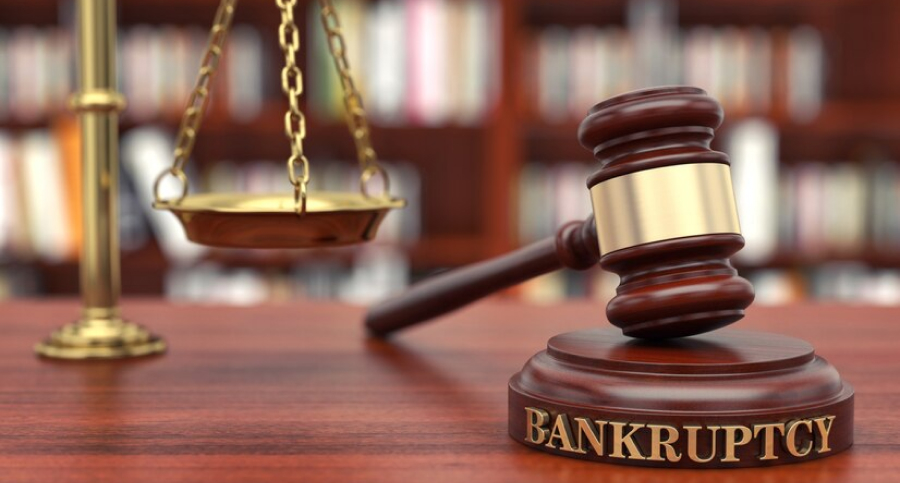What To Do Before Filing for Bankruptcy
by Abdul Aziz Mondal Legal Published on: 21 February 2024 Last Updated on: 14 May 2025

Lost amid the recent flurry of news concerning mass layoffs by large companies is the rise of bankruptcy filings.
According to the Administrative Office of the U.S. Courts, there was a 16.8 percent rise in total bankruptcy filings in both business and non-business bankruptcies from 2022 to 2023, showing an increase of about 65,000 cases.
For the average American, this may make sense. As inflation and Artificial Intelligence are rising, the current economic situation has been challenging.
With the way things are, there is a high possibility that things will get even more challenging. This can also mean that there is a higher likelihood that, sooner or later, more people will be filing for bankruptcy.
Though that is not certain, preparing yourself for that slight possibility doesn’t hurt. And the best way to start that preparation is by arming yourself with knowledge, particularly about bankruptcy. So as not to overwhelm you, let’s keep this short and start with the basics. In this article, we will be discussing the ways of filing for bankruptcy within the US legal system.
What is bankruptcy?

Bankruptcy is the legal proceeding that is initiated when an individual or business has lost their capacity to repay the outstanding debts or obligations. The process of bankruptcy offers a fresh start for individuals who can no longer afford to pay their bills.
The process of bankruptcy begins with the petition being filed by the debtor, which is the widely used method on behalf of the creditors, which is rare. Moreover, all of the assets of the debtor are thoroughly measured and evaluated. Then, the assets might be used to repay a portion of their outstanding debts.
How does bankruptcy work?

Bankruptcy offers a person or entity a chance to start fresh by forgiving debts that they are unable to pay. Meanwhile, creditors have a chance to get some repayment based on the individual’s or business’s assets that are available for liquidation.
In theory, the capacity to file for bankruptcy benefits the overall economy and allows individuals and companies a second chance to gain access to credit. It can also assist creditors in regaining a portion of debt repayment.
The filing of bankruptcy cases goes through the trial process in federal courts. A bankruptcy judge makes the decision, including whether a debtor can file and whether they should be discharged of their debts.
The administration of bankruptcy cases is handled by a trustee, an officer who is appointed by the United States Trustee Program, which is under the Department of Justice. This is done to represent the debtor’s estate within the proceedings. The debtor and the judge are usually known to have zero contact unless the case makes certain objections through the creditor.
Finally, when the bankruptcy proceedings are completed, the debtor is relieved of their debt obligations, allowing them a fresh start.
Types of Bankruptcy Filings

The type of chapter categorizes filings for bankruptcy within the United States according to the Bankruptcy Code. Here are some of the most common types of filings for bankruptcy:
Chapter 7
This chapter of bankruptcy allows in the disposal of unsecured debts, such as credit card balances and medical bills.
Chapter 11
Companies usually file Chapter 11 bankruptcy with the hope of staying in business. It allows the entity to create profitability plans, cut costs, and find new ways to generate revenues.
Chapter 13
If you qualify to have too many assets while filing for bankruptcy under Chapter 7, then you will be eligible for Chapter 13 bankruptcy. Wage earner’s plan is another name for this bankruptcy type.
The process for filing bankruptcy in the US

Here are some things you need to do before filing for bankruptcy:
Gather all your documents
This includes your tax returns, account statements, appraisals of all assets you own, pay stubs, and any other paper or records on your debts.
Read about bankruptcy
a bit of self-study could go a long way. Try to read about bankruptcy from online sources or law firm websites as much as possible. A good start would be understanding the differences between the types of bankruptcy.
Consult A Bankruptcy Lawyer
while studying on your own can help tremendously, nothing can replace listening and getting advice from a professional. Most bankruptcy lawyers provide free consultations for the first meeting. Learning directly from a bankruptcy lawyer can solidify your knowledge about bankruptcy more than.
Take note of the fees
Filing a bankruptcy petition is not free. Depending on the type of bankruptcy you intend to pursue, you can expect to pay a filing fee of over $300, excluding other related fees, as well as the fees of your bankruptcy lawyer, should you decide to get one.
Know the steps required before filing
For example, you need to complete a credit counseling course before filing (and also after). Most of these pre-filing steps will cost you, too.
One thing every potential bankruptcy petitioner should know is that you should refrain from trying to game or beat the system when it comes to bankruptcy filings.
This includes hiding assets or transferring them to friends before filing, among other sneaky tactics.
But this is only true if the debtor looking to apply for it is honest and transparent.
Otherwise, your bankruptcy petition would not only fail, but you would put yourself at risk of going to prison.
Conclusion
Now, you have a better idea regarding the process of filing for bankruptcy in the US. Make sure that you’re aware of the proceedings that go along while filing for bankruptcy before you decide to do so. Additionally, also make sure that you hire an experienced bankruptcy lawyer who will assist you in every step of filing for bankruptcy—best of luck.
Read Also:



































































































